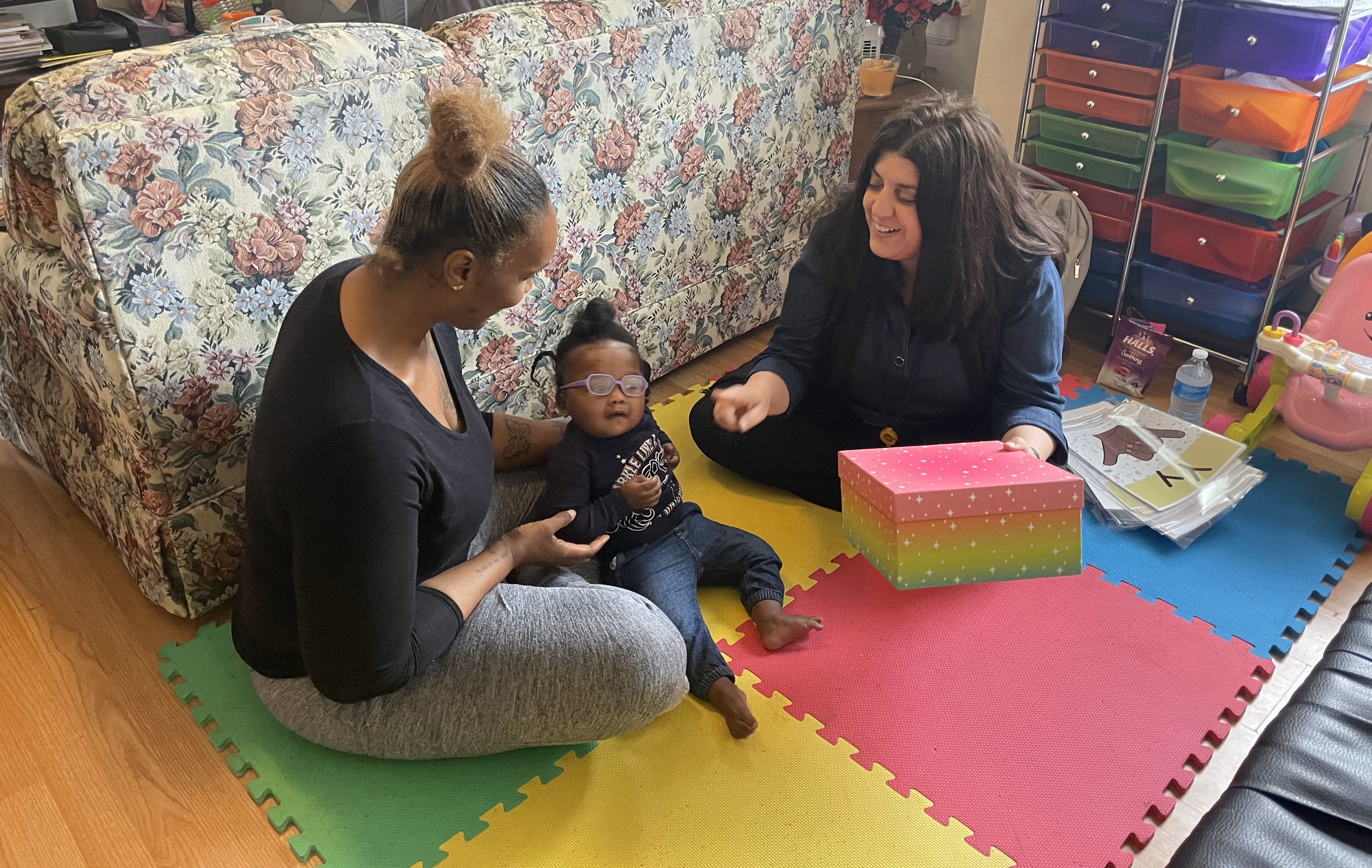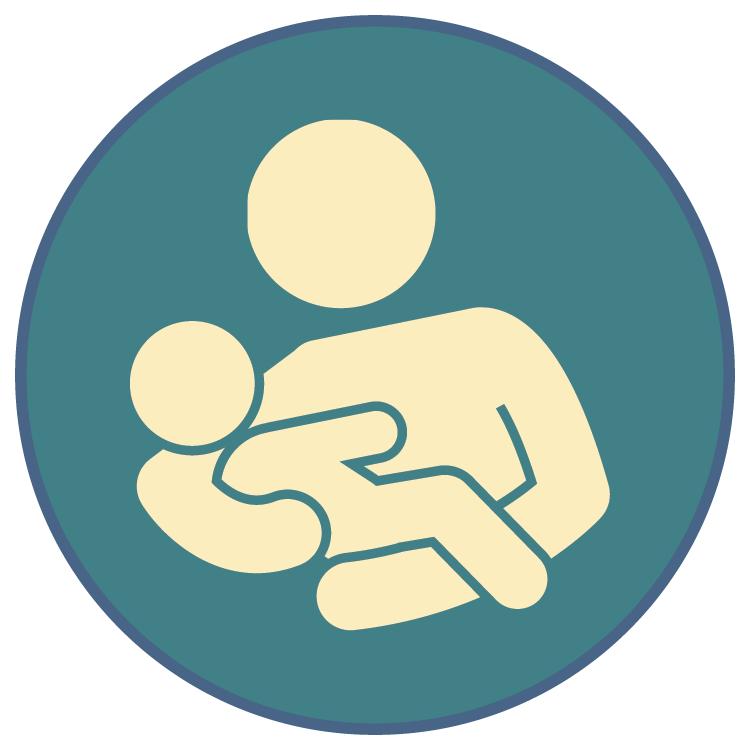Lesson 2 - Connecting with Others
In this lesson, you’ll learn how children who are deafblind communicate and specific strategies to help families support their child’s receptive and expressive communication and facilitate connections with others. Lesson 2 also explores how children who are deafblind develop concepts and what caregivers can do to teach concepts.
For more information, visit the National Center on Deafblindness at nationaldb.org.

Learning Objectives
Lesson 2 has three learning objectives:
- Compare the ways early communication development for infants and toddlers who are deafblind differs from that of their peers with typical hearing and vision
- Describe strategies that can be used to encourage an infant or toddler who is deafblind to communicate and make connections with others
- Explain what early intervention providers can do to encourage the concept development of an infant or toddler who is deafblind
Part 1 - Understanding Early Communication
In Part 1, you’ll learn about early communication development for children who are deafblind, including receptive and expressive communication.
Activities
Instructors: The following activities can be adapted for a variety of purposes. For example, have participants turn in written or posted responses, or use the topics and questions as discussion starters. Some can be used for group activities.
Option 1
What questions might you ask during a parent interview to learn how their infant or toddler communicates? How will responses to these questions inform your work with the family?
Option 2
Using the questions generated in Option 1, interview a parent of an infant or toddler (may be deafblind or hearing-sighted). Describe what you learned from the interview about the child’s communication development.
Option 3
You learned in Part 1 of this lesson about the difference between expressive and receptive communication. And you learned that a typical hearing-sighted child develops communication much differently than a child who is deafblind. Explain how being deafblind impacts a young child’s expressive and receptive communication development.
Part 2 - Encouraging Communication and Connections
Part 2 focuses on steps and strategies you can use to encourage a child who is deafblind to communicate and make connections with others.
Activities
Instructors: The following activities can be adapted for a variety of purposes. For example, have participants turn in written or posted responses, or use the topics and questions as discussion starters. Some can be used for group activities.
Option 1
Brainstorm routines a caregiver and child might do throughout the day (like changing a diaper). Select one routine. What object or touch cue could the caregiver use to alert the child of the routine (choose something that was not discussed in Part 1 or 2)? Describe the cue and how the use of it will impact the child. (For bonus points, explain why using this touch or object cue can be helpful for the caregiver, too).
Option 2
Explain why offering a young child a choice can be a way to encourage their communication development. What is a specific example of a choice you might offer a child who is deafblind?
Option 3
Watch this video of a child who is deafblind during a home visit with several providers. What do you notice about the child’s biobehavioral state? How does this impact her ability to communicate and respond during this session? Describe what you observe about her biobehavioral state and what you would tell the parent about how this is impacting the child's communication.
Part 3 - Concept Development
In Part 3, you’ll learn how to support concept development for children who are deafblind and how caregivers can support their child’s emerging literacy.
Activities
Instructors: The following activities can be adapted for a variety of purposes. For example, have participants turn in written or posted responses, or use the topics and questions as discussion starters. Some can be used for group activities.
Option 1
How does concept development for a child who is deafblind differ from that of a child with typical hearing and vision? Select a specific concept other than one described in this lesson, and explain how you would begin building an understanding of it with a child who is deafblind.
Option 2
Consider spatial concepts, such as in, out, top, and bottom. How is developing an understanding of these concepts different when a child has limited opportunities for incidental learning? What are ways you could begin helping a child who is deafblind develop an understanding of one of these concepts?
Option 3
You have learned in this lesson about the importance of using authentic object cues to support concept development for a child who is deafblind. Explain why this is so using a specific example of an authentic object cue.
Quiz
Instructors are welcome to use this quiz as-is or adapt it to meet their needs. It can be used to test participants’ knowledge following completion of the module or for pre- and post-test evaluation. To obtain answers to the quiz, instructors should contact support@nationaldb.org.
Additional Resources
Early Interactions with Children Who Are Deaf-Blind
A factsheet with strategies for parents on engaging with their infant or toddler who is deafblind
Building Trusting Relationships: NCDB Practice Guide
A list of the essential components and skills needed to build a trusting relationship
Emerging (Presymbolic) Communication
Resources on the early communication of children who are deafblind and how to promote communication development
Concept Development
Resources that explain why concept development is different for children who are deafblind than those with typical hearing and vision and how to teach concepts
